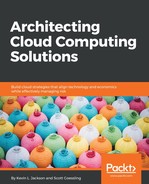PaaS takes both IaaS and SaaS and adds yet another twist on trying to solve the problem. As described earlier, people are trying to control costs, eliminate large major cash outlays, accelerate, modernize strategies, and move to only paying for what is needed, when it is needed. IaaS helped but still required a lot of people, skills, and money to support the applications. Based on our direct research, software required between 8x and 32x the annual cost of the server annually in management, maintenance, monitoring, and support. A $6,000 server written down over a 3-year use cycle would cost between $16,000 and $64,000 each year for software support. The cost was dependent on the specific software and organizational efficiency. These operational changes meant that new infrastructure and software models were required to keep businesses innovating and moving forward.
The next challenge was that the as-a-service model was not available with every software package. Some software was just not adaptable to modern cloud models. A complicating issue was that, for most companies, only about 15%-20% of software was off-the-shelf. Most of it was custom developed, homegrown, and built for specific functions and purposes within each business. Nearly every company still had to develop proprietary applications, middleware, services, connectors, workflows, and more. Each of those projects required different programming languages with different frameworks and libraries. How can things accelerate? How can costs be controlled?
Interestingly, people realized that the combinations of languages, libraries, and frameworks used were often the same or very similar. Consumers needed the ability to quickly build and deploy applications coded with provider-supported programming languages, services, libraries, and tools. The end user did not want to manage or control the underlying cloud infrastructure, but they did need to control the deployed application's configuration settings. CSPs responded by integrating all of the needed components and subsystems into a solution stack that could now be offered as a service or rented as-needed. This new PaaS enabled faster development at a lower cost. The environment was now ready to use, managed, and monitored, enabling developers to be productive immediately using the latest components available. This has led to many other variations where raw materials are integrated into environments that enable the building and assembling of new creations quickly and cost-effectively.
